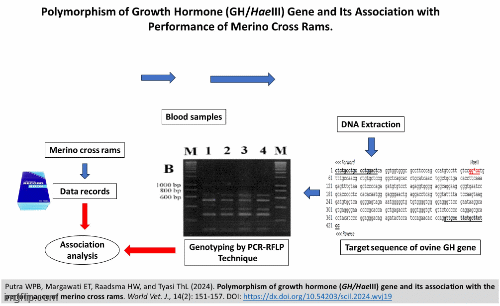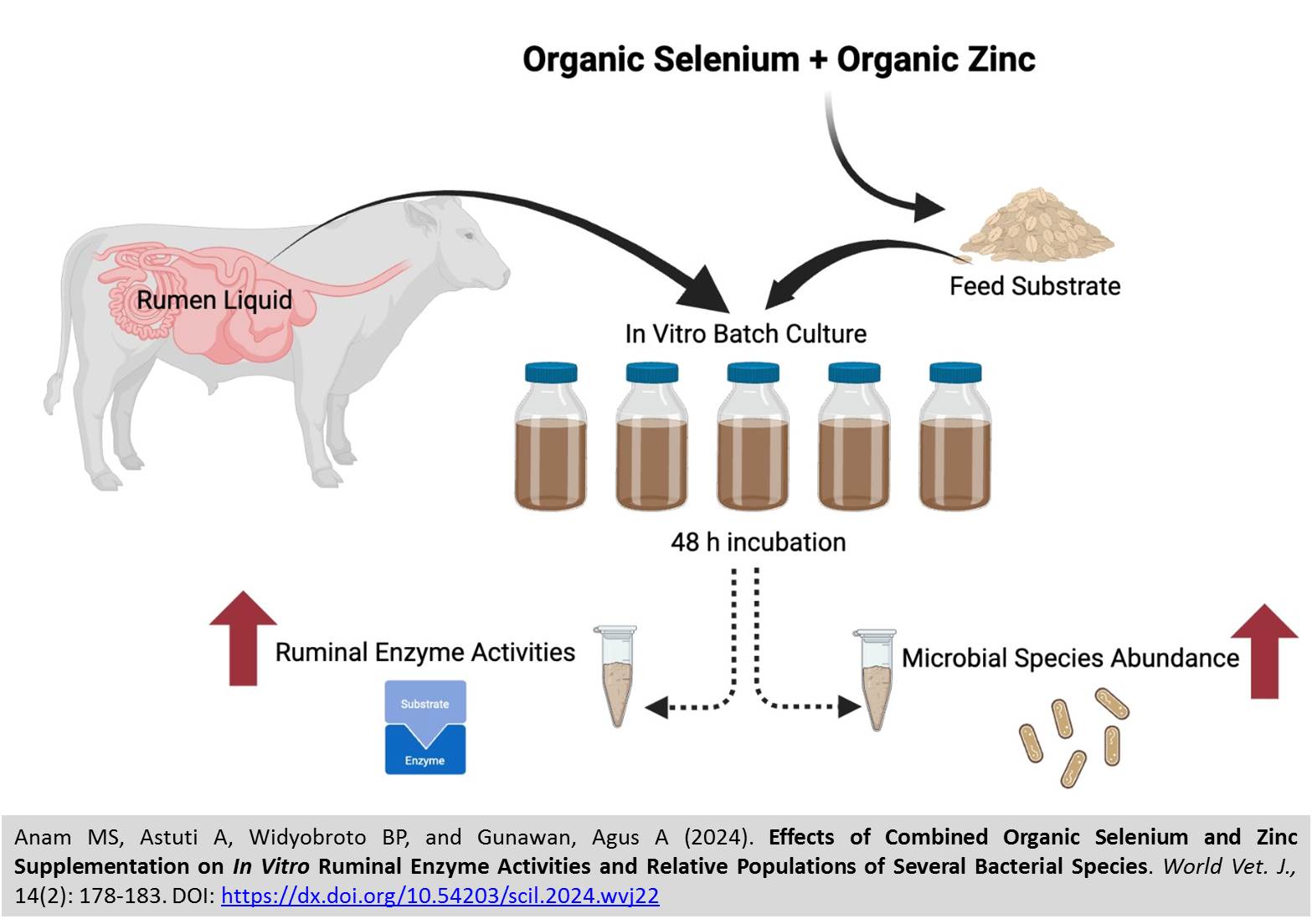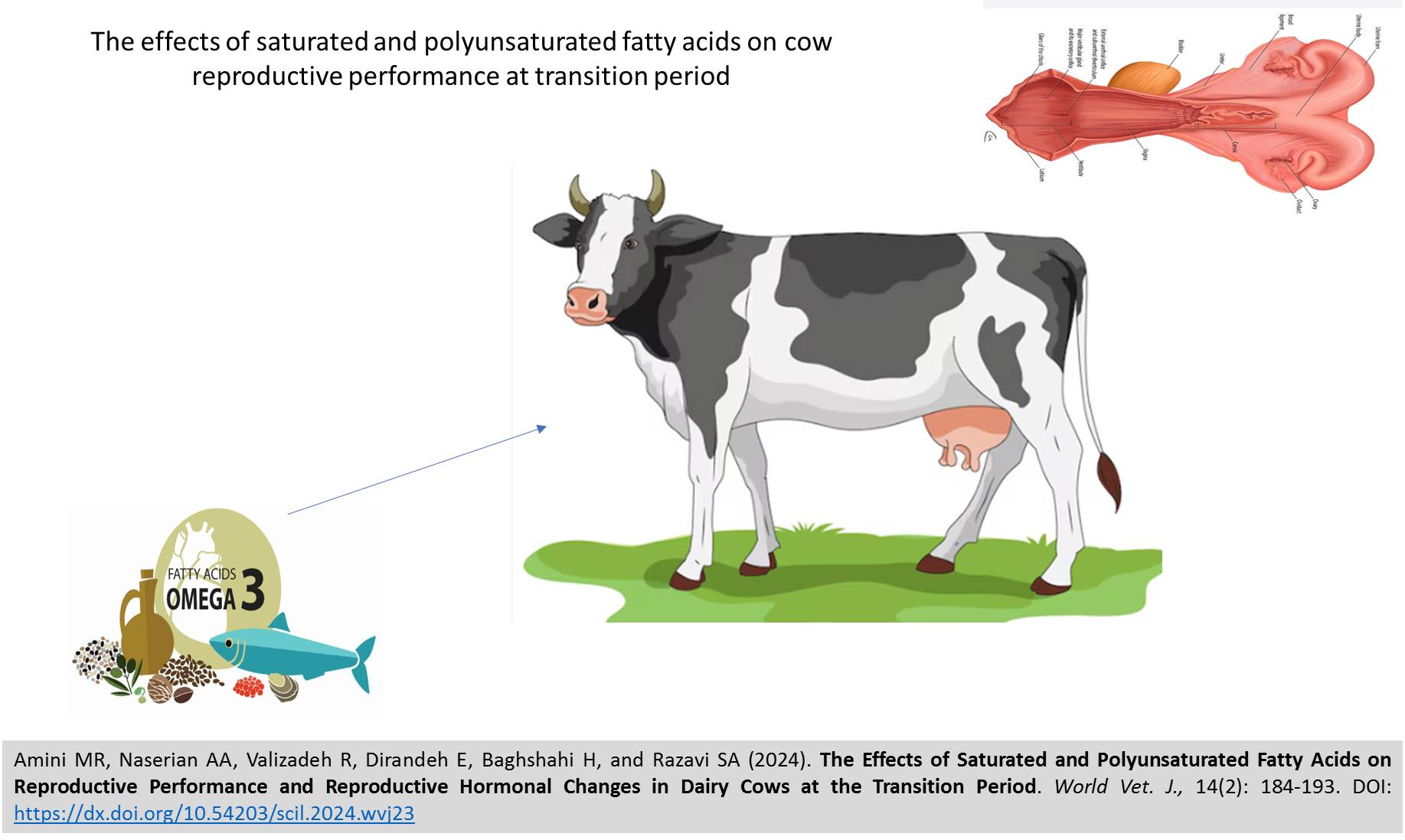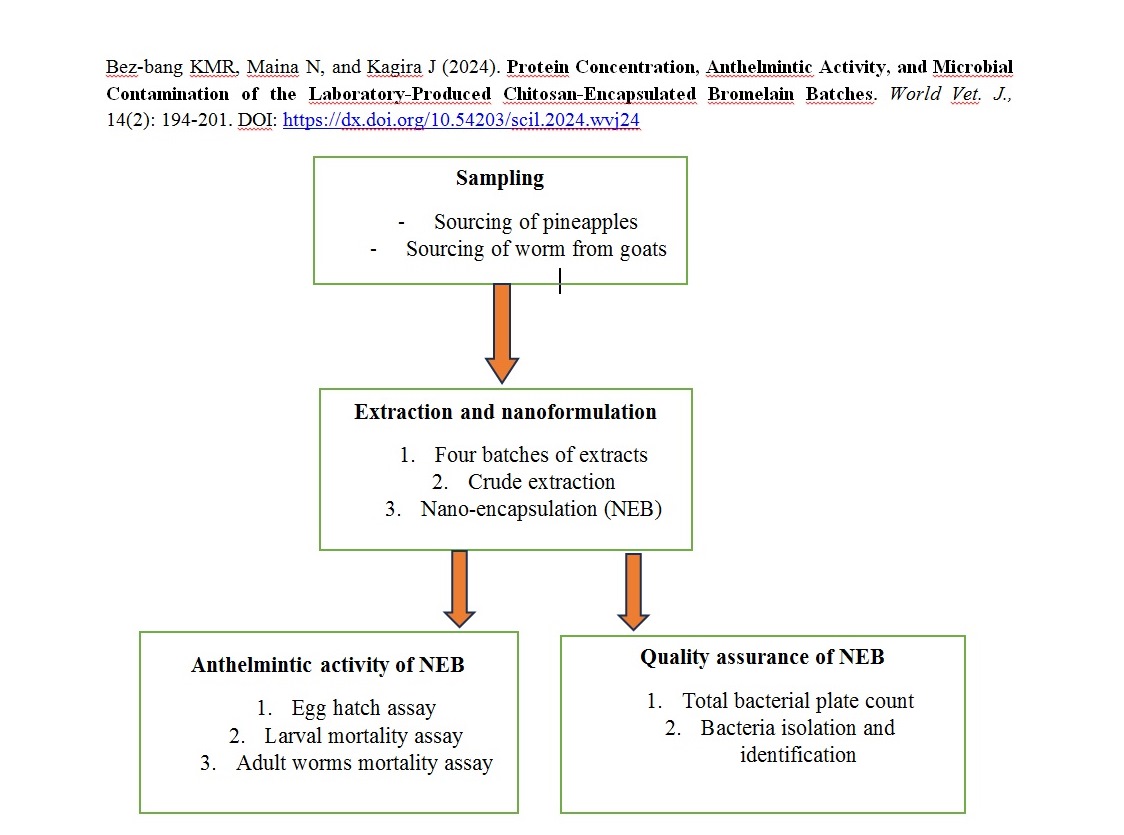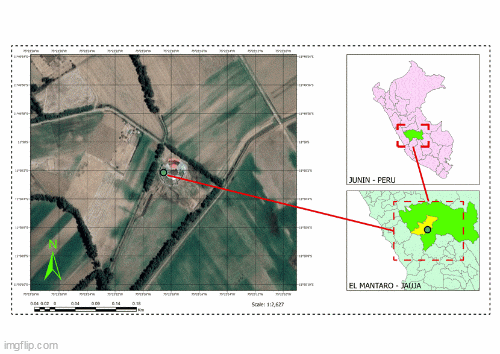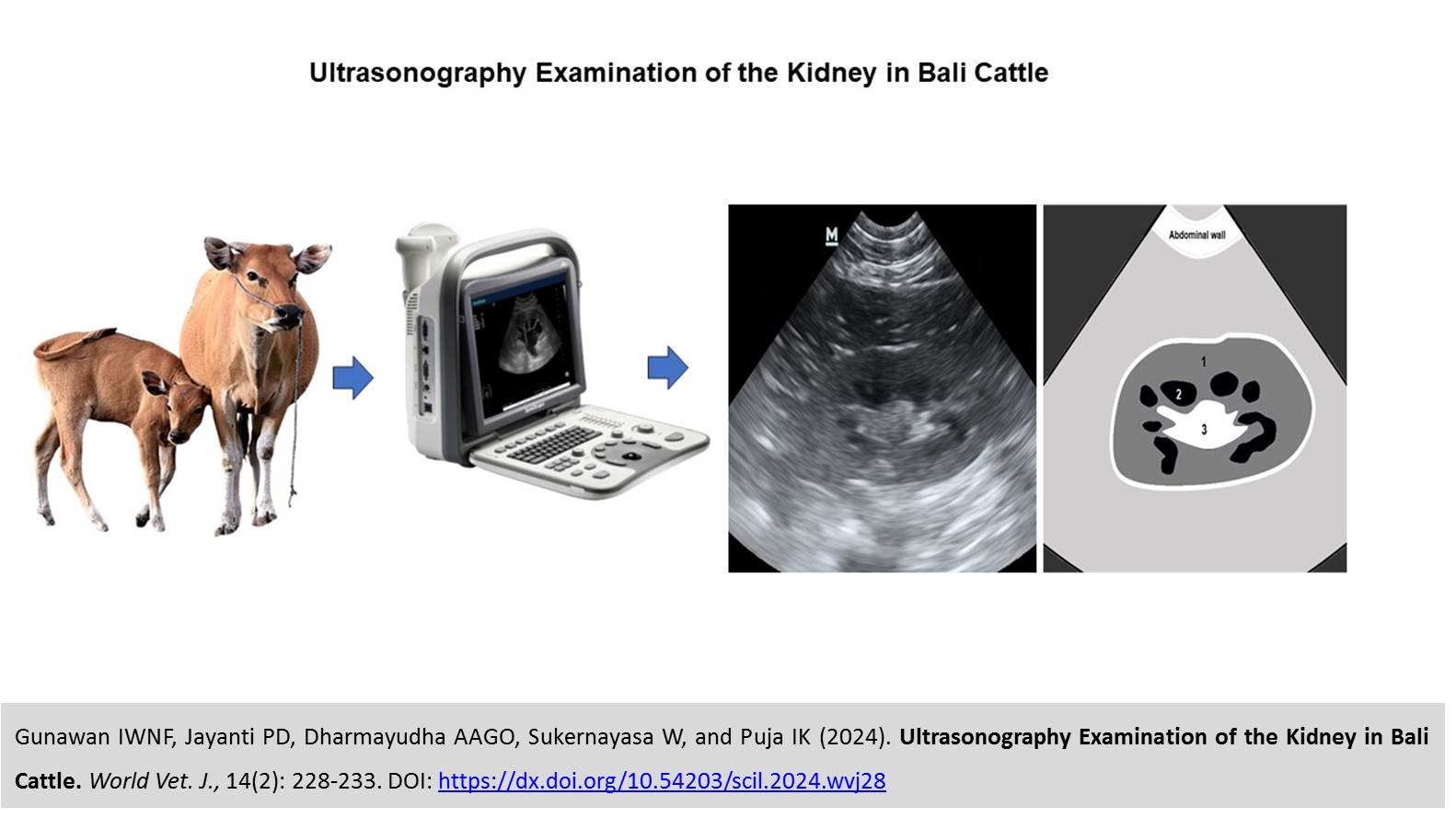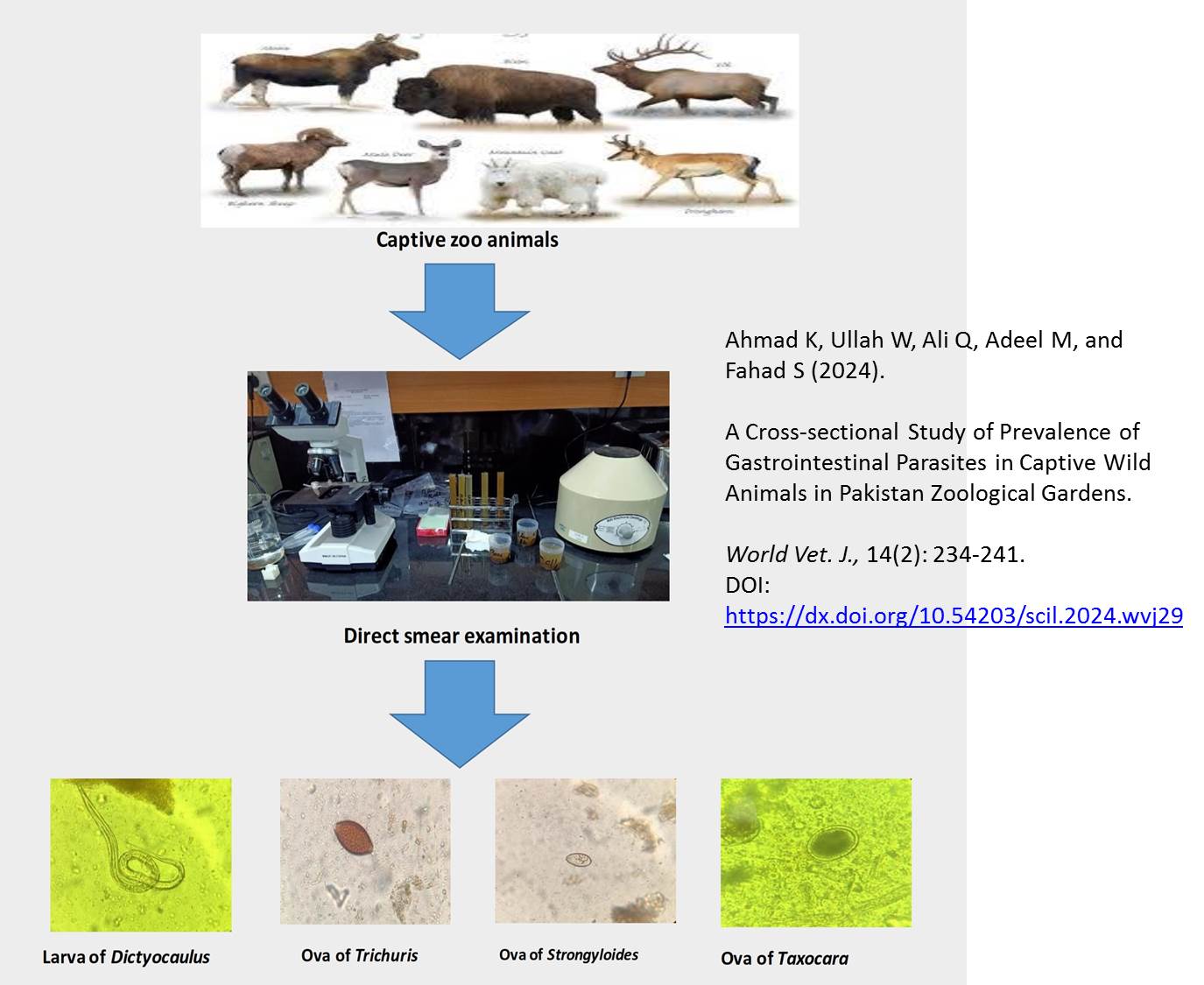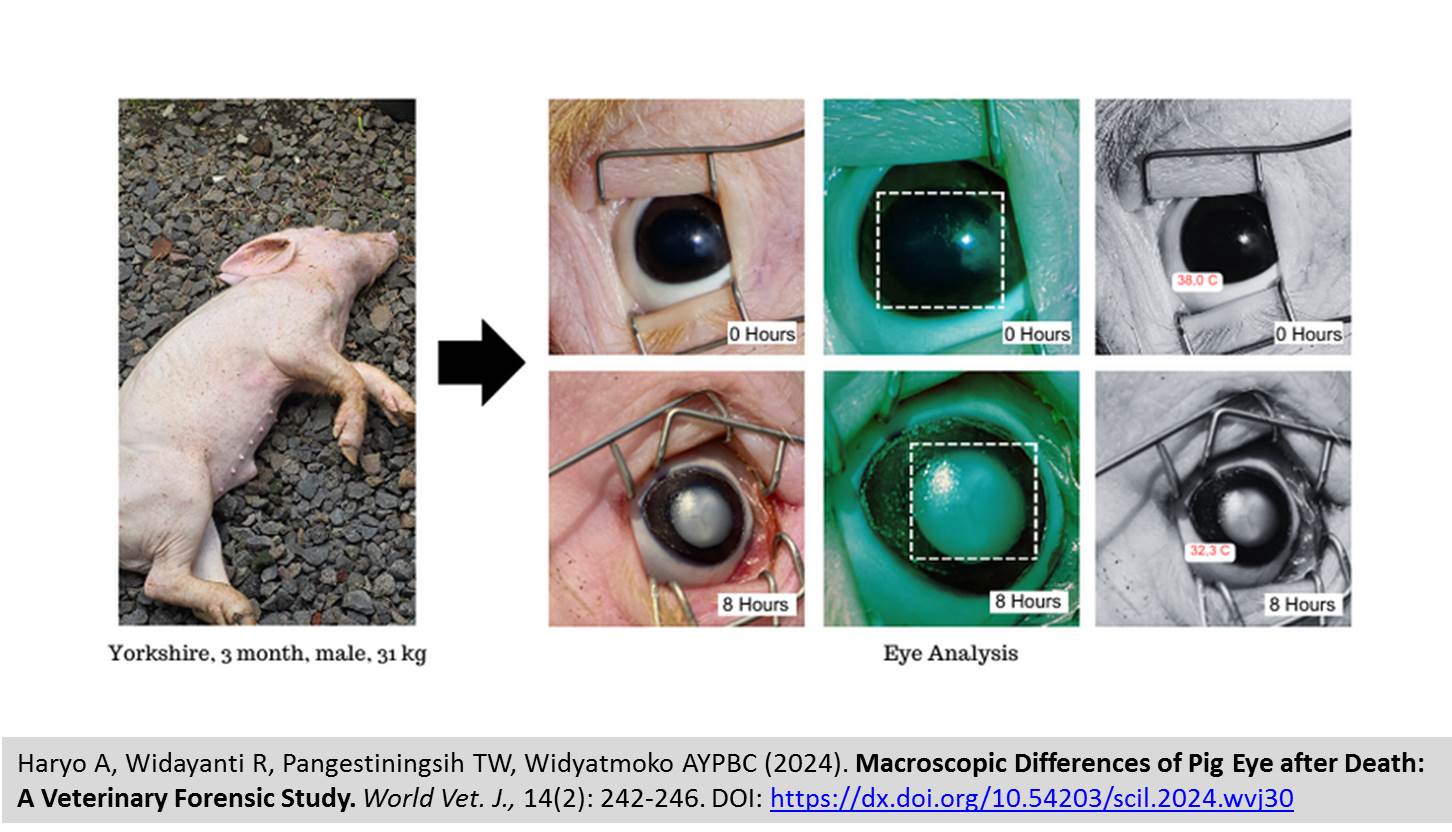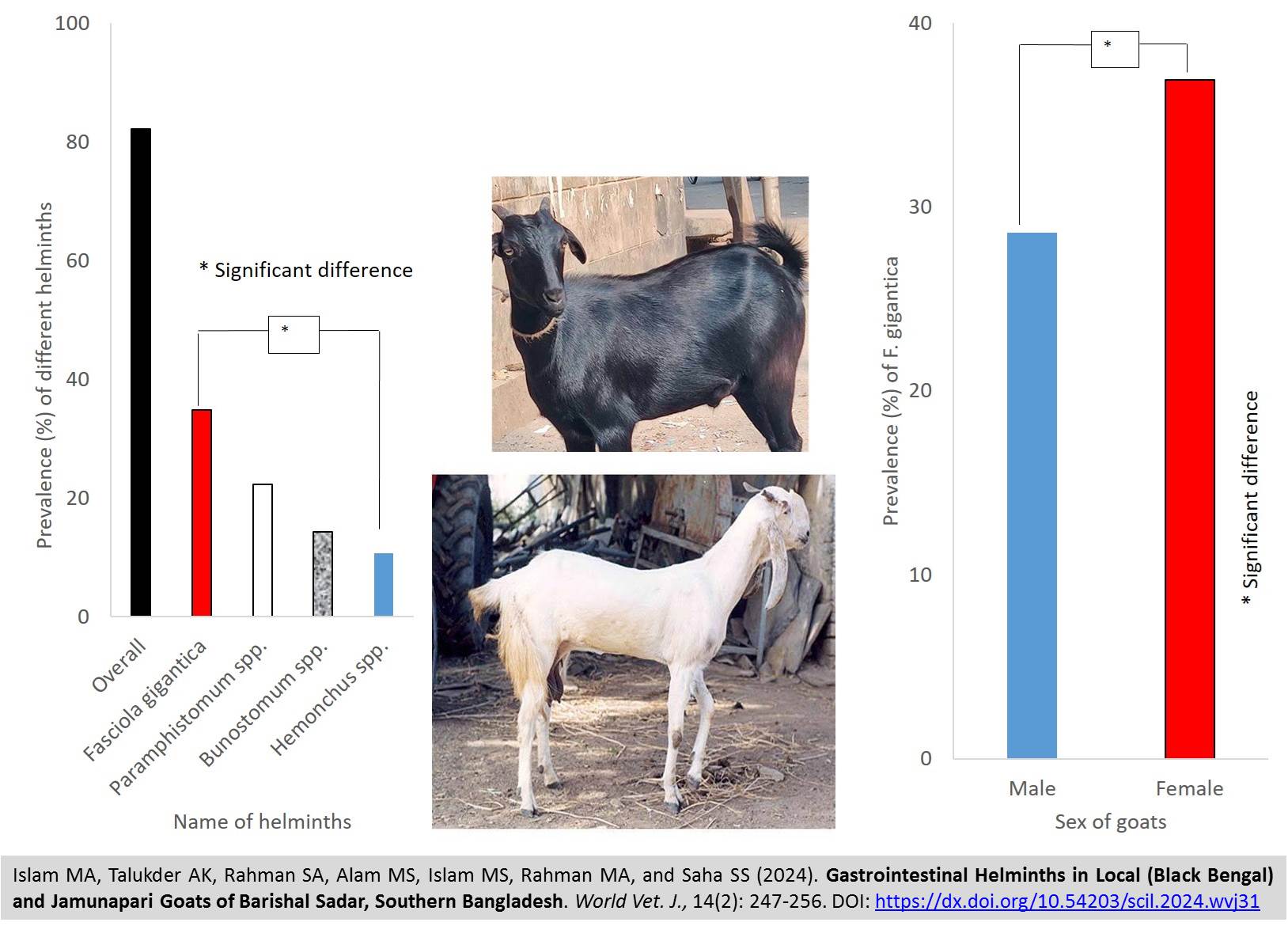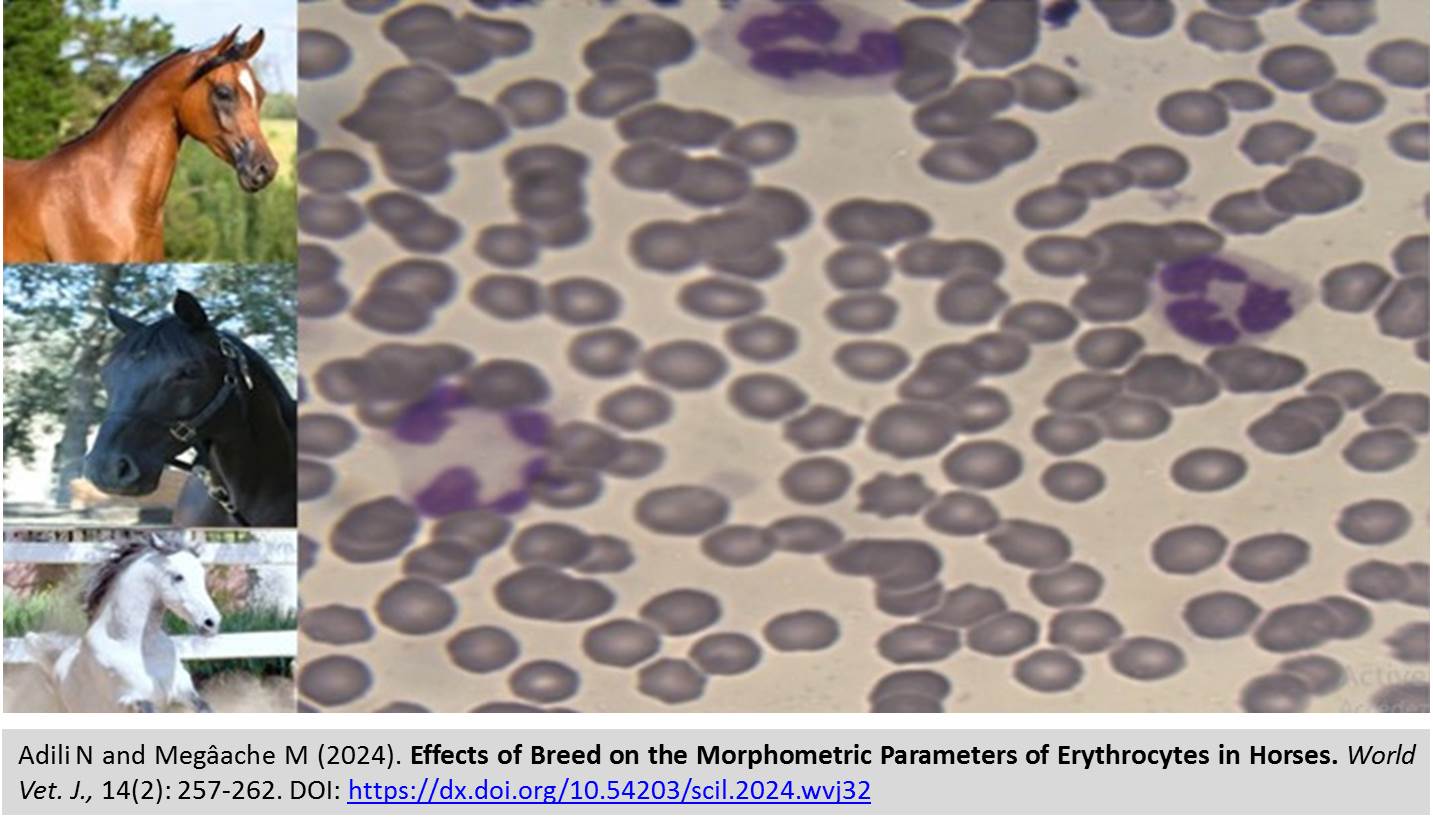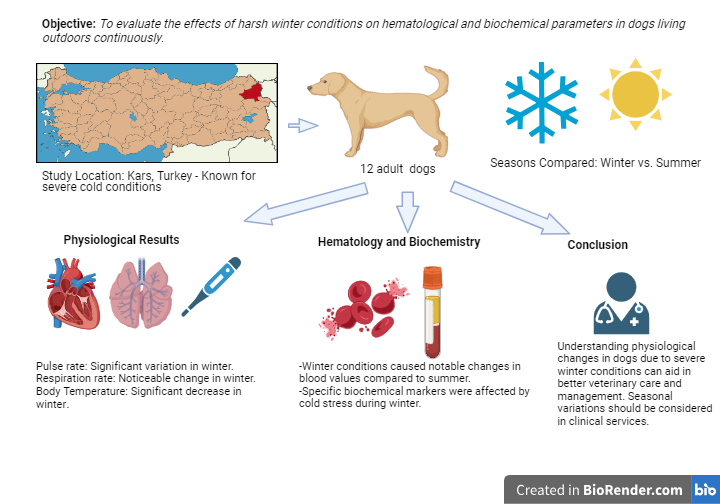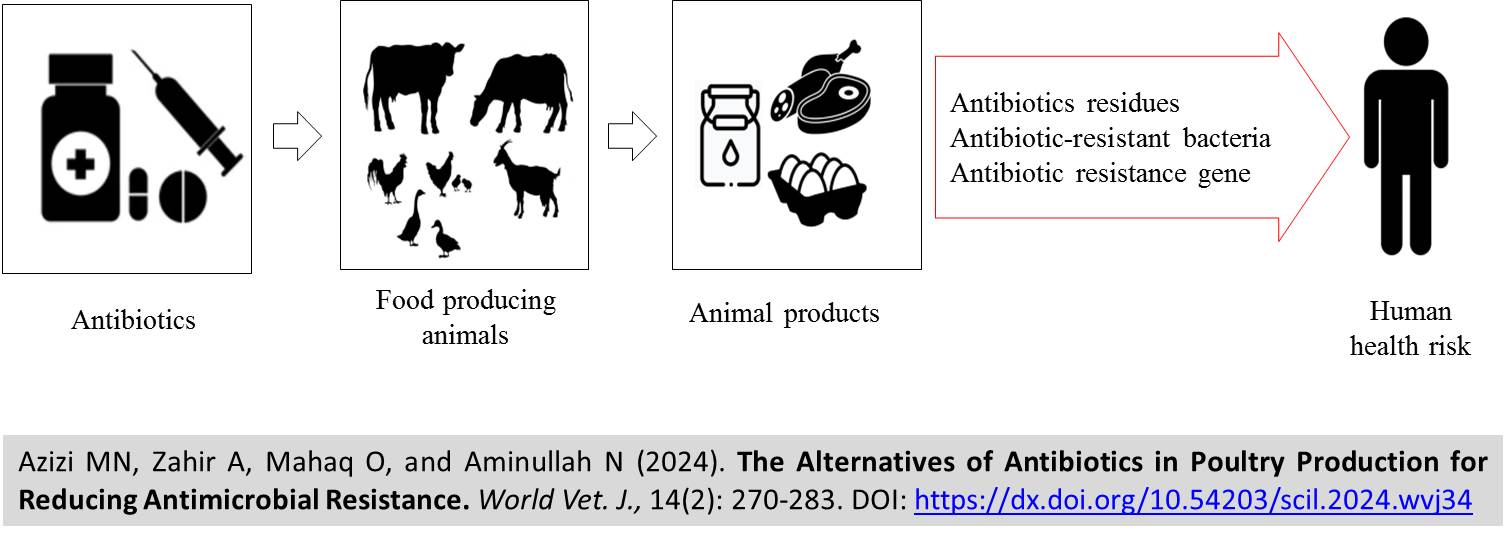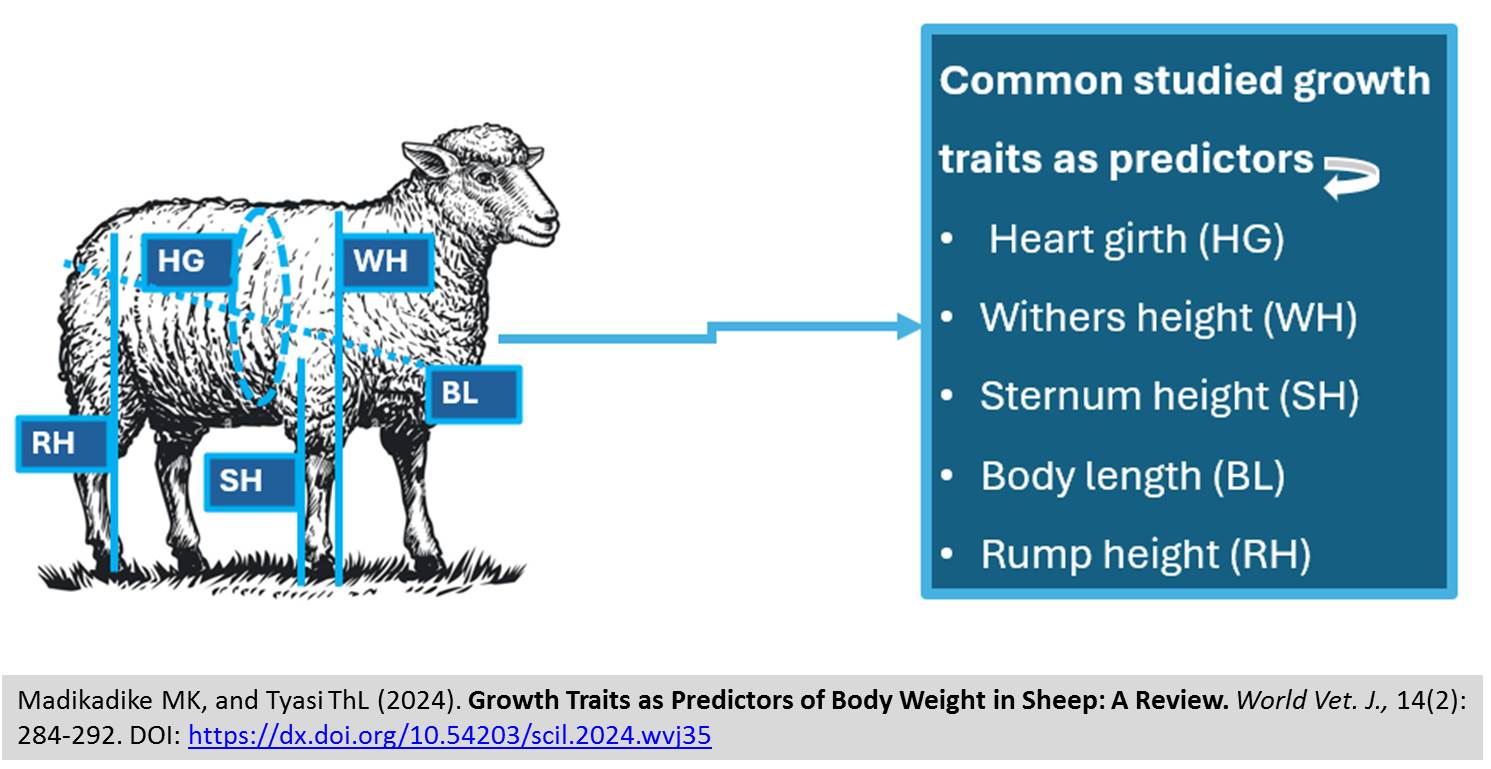Previous issue | Next issue | Archive
![]() Volume 14 (2); June, 2024 [Booklet] [EndNote XML for Agris]
Volume 14 (2); June, 2024 [Booklet] [EndNote XML for Agris]
Polymorphism of growth hormone (GH/HaeIII) gene and its association with the performance of merino cross rams
Putra WPB, Margawati ET, Raadsma HW, and Tyasi ThL.
World Vet. J. 14(2): 151-157, 2024; pii:S232245682400019-14
DOI:https://dx.doi.org/10.54203/scil.2024.wvj19
ABSTRACT: Merino cross sheep (75% Merino × 25% Garut) are introduced by the government of Indonesia for meat production purposes. The present study aimed to determine the polymorphism in the exon 2 region of the growth hormone (GH) gene (422 bp) in Merino cross rams using the PCR-RFLP technique and to analyze its relationship with body weight and body measurements of the rams. A total of 145 rams aged one-year-old with an average body weight of 29.08 ± 7.96 kg from the breeding station in West Java, Indonesia were considered as the experimental animals. It was indicated that a missense mutation of c.55G > A (p.G19S) was detected in the target sequence of the GH gene in Merino cross rams. The PCR-RFLP analysis in the GH gene of Merino cross with HaeIII restriction enzyme (GH/HaeIII) was observed in a moderate category with a polymorphic informative content (PIC) value of 0.22. Therefore, the G allele was more frequent than the A allele (0.85 versus 0.15). Furthermore, the genotype AA was not present among the sheep that were part of the study. However, the polymorphism of p.G19S was found to have no significant association with birth weight and body measurements in one-year-old Merino cross sheep. However, the GH/HaeIII gene in Merino cross rams exhibited polymorphism, primarily with two genotypes: GG (wildtype) and GA (carrier). The G allele was identified as the dominant allele in the ovine GH gene, occurring with a frequency of 0.85. Importantly, the polymorphism of the GH/HaeIII gene was significantly linked to birth weight and chest depth in one-year-old Merino cross rams. These findings provide preliminary insights that could potentially aid in the early stages of molecular selection for Indonesian Merino cross sheep.
Keywords: Growth hormone gene, Merino cross ram, Performance, Polymorphism
[Full text-PDF] [Crossref Metadata] [Scopus] [Export from ePrint]
Impact of Fixation of Camel Lymph Node Cells on Marker Expression Stability in Flow Cytometry
Al-Sukruwah MA, Althagafi H, Al-Abdulsalam NK, and Hussen J.
World Vet. J. 14(2): 158-168, 2024; pii:S232245682400020-14
DOI: https://dx.doi.org/10.54203/scil.2024.wvj20
ABSTRACT: Single cell immunophenotyping by flow cytometry has proven a useful and high sensitive method for the analysis of immune cell composition and phenotype in different lymphatic and non-lymphatic tissues. Fixation of stained cells is usually recommended when the cells need to be preserved for later analysis by flow cytometry to avoid changes in cell morphology and expression of the level of cellular antigens. In the present study, a stain-fix approach was used in combination with flow cytometry to investigate the impact of fixation of camel lymph node cell suspension (n = 5 camels) after labeling with monoclonal antibodies to some leukocyte antigens on their cellular composition and expression density of immune cell markers. The obtained results indicated that camel lymph node cell suspension stained with fluorochrome-conjugated mAbs to leukocyte antigens and fixed with paraformaldehyde (PFA) will keep stable values for their immune cell composition for at least six days when analyzed by flow cytometry. However, if cell subsets were to be identified, fixation may result in different values that were obtained when analyzing fresh stained unfixed cells. Especially the instability in the fluorescence intensity of CD14, CD172a, and MHCII will lead to significant changes in the frequency of monocyte subsets (classical versus intermediate or non-classical) and the identification of macrophage functional subtype (M1 versus M2). Similarly, the instability in CD44 expression may affect the identified phenotype of T cells with significantly lower frequency of activated T cells. In conclusion, flow cytometric data collected from stained and PFA-fixed cell suspension prepared from camel lymph nodes should be interpreted with care if the functional subtype of cells is to be identified based on surface molecule expression.
Keywords: Camel, Fixation, Flow cytometry, Immune cell, Lymph node
[Full text-PDF] [Crossref Metadata] [Scopus] [Export from ePrint]
Pathogenic and Antibiotic-Resistance Genes of Pasteurella multocida Isolated from Goats in the Mekong Delta, Vietnam
Nguyen TT, Nguyen VLP, Truong TT, Nguyen CTH, and Nguyen TK.
World Vet. J. 14(2): 169-177, 2024; pii:S232245682400021-14
DOI: https://dx.doi.org/10.54203/scil.2024.wvj21
ABSTRACT: Pasteurella multocida (P. multocida) is one of the predominant pathogens that mostly cause respiratory diseases in domestic animals, such as goats. To determine P. multocida serotypes and the prevalence of pathogenic and antibiotic-resistance genes the PCR method was used. A total of 143 isolated P. multocida strains were collected from 289 healthy hybrid Boer-Saanen goats’ nasal samples in the Mekong Delta, Vietnam, from March to June 2023. A total of 143 P. multocida strains, serotype B accounted for the highest proportion (51.05%), followed by serotype A (14.69%), and the lowest was serotype E (0.70%) while (39.86%) of strains could not be determined serotypes. Among the six virulence genes surveyed, the sodA gene (56.64%) had the highest presence, while the ompH gene (4.20%) had the lowest presence. Pathogenic genes were present mainly in serotypes A and B; tbpA was frequently detected in serotype A (66.67%), and sodA was commonly detected in serotype B (56.16%). There were 14 virulence gene combinations in 59/109 (54.13%) serotyped P. multocida strains, and the pattern of sodA + toxA + tbpA was prevalent at the highest rate (12.84%). Moreover, among the eight investigated antibiotic resistance genes, the sulII gene had the highest presence rate (74.13%), compared to the tetA gene with the lowest presence rate (13.29%). Gene sulII was mainly detected on strains belonging to serotypes A (80.95%), B (83.56%), and F (77.78%). A total of (77.98%) of serotyped P. multocida strains indicated multi-harbor from two to six antibiotic-resistance genes, and the most common pattern was aadB + sulII (10.09%). The prevalence of five pathogenic P. multocida serotypes harboring diverse antibiotic-resistance genes isolated from nasal samples could be a critical issue in treating and preventing the respiratory diseases caused by P. multocida in goats in the Mekong Delta.
Keywords: Antibiotic resistance, Goat, Pasterella multocida, Pathogenicity, Mekong Deltadd
[Full text-PDF] [Crossref Metadata] [Scopus] [Export from ePrint]
Effects of Combined Organic Selenium and Zinc Supplementation on In Vitro Ruminal Enzyme Activities and Relative Populations of Several Bacterial Species
Anam MS, Astuti A, Widyobroto BP, and Gunawan, and Agus A.
World Vet. J. 14(2): 178-183, 2024; pii:S232245682400022-14
DOI: https://dx.doi.org/10.54203/scil.2024.wvj22
ABSTRACT: Selenium (Se) and zinc (Zn) are essential animal microminerals. Combining Se and Zn (Se-Zn) as a feed additive in its influence on rumen fermentation patterns is still very limited, so further investigation is needed. The present study explored the supplementation impact of combined Se-Zn from organic sources on rumen enzyme activity and relative abundance of several bacterial species through an in vitro method. Five treatments, each with six replicates were used in the study. The first group treated without Se and Zn supplementation (T0, control), the second group treated with 0.3 ppm Se + 60 ppm Zn (T1), the third group treated with 0.45 ppm Se + 60 ppm Zn (T2), the fourth group treated with 0.3 ppm Se + 90 ppm Zn (T3), and the fifth group treated with 0.45 ppm Se + 90 ppm Zn (T4). The parameters observed included rumen microbial enzyme activities (carboxyl methyl cellulase, amylase, protease) and the relative abundance of rumen microbes (Ruminococcus sp., Ruminococcus flavefaciens, Ruminococcus albus, Streptococcus sp., Prevotella ruminicola, and Eubacterium ruminantium). Results indicated that carboxyl methyl cellulase (CMC-ase) and amylase activities raised in T2, T3, and T4 in comparison to T1 and T0 treatments. Protease activity and protein enzyme content increased in T2 compared to all treatments. The relative abundance of Ruminococcus sp. and Ruminococcus albus was higher in T2 and T3 compared to T0 treatment. Furthermore, an elevated Ruminococcus flavefaciens was indicated in T2 compared to other treatments. The T2, T3, and T4 led to higher abundances of Eubacterium ruminantium, Prevotella ruminicola, and Ruminococcus albus compared to T0 and T1. It is concluded that organic Se and Zn enhanced the relative abundance of several bacterial species and the activity of enzymes in the rumen; optimal results are recommended when combining 0.45 ppm Se + 60 ppm Zn.
Keywords: Bacterial Species, Enzyme Activity, Rumen, Selenium, Zinc
[Full text-PDF] [Crossref Metadata] [Scopus] [Export from ePrint]
The Effects of Saturated and Polyunsaturated Fatty Acids on Reproductive Performance and Reproductive Hormonal Changes in Dairy Cows at the Transition Period
Amini MR, Naserian AA, Valizadeh R, Dirandeh E, Baghshahi H, and Razavi SA.
World Vet. J. 14(2): 184-193, 2024; pii:S232245682400023-14
DOI: https://dx.doi.org/10.54203/scil.2024.wvj23
ABSTRACT: Reproductive success is crucial in dairy farming as it heavily relies on the consumption of a complete mixed ration for the diet. The current study investigated the effects of adding saturated (SFA) and polyunsaturated fatty acids (PUFAs) to dairy cows' diets on reproductive performance and reproductive hormones during the transition period. A total of 30 Holstein dairy cows were randomly divided into three groups (10 animals in each group), based on parity and body condition score. The cows had an initial body weight of 567.5 ± 40.3 kg (mean ± SD), a body condition score of 3.5 ± 0.26 out of 5 (mean ± SD), and a parity of 1.7 ± 0.02 (mean ± SD). The control group received a balanced ration meeting all the nutrient requirements according to the National Research Council (NRC) guidelines. The SFA group received 1.4% of dry matter (DM) as palm oil (RumiFat®), while the omega group had 5% of DM as safflower (a source of n-6 fatty acids) added from 21 days before parturition to 21 days after, and 4% of DM as flaxseed (a source of n-3 fatty acids) added from 21 to 42 days after parturition. In the Omega group, estradiol concentration significantly increased on artificial insemination (AI) day (12.54 pg/mL). Additionally, serum prostaglandin F2-alpha concentration was significantly higher in the omega group (0.732 pg/mL on day 7 and 1.68 pg/mL on day 14) compared to other groups. The control group exhibited the highest progesterone concentrations at 14 and 21 days post-calving compared to the other groups, other groups. whereas the omega group highest concentration five days after AI. The omega group also showed a significantly higher mean number of follicles >10mm and larger ovulatory follicle diameter. Moreover, a higher percentage of pregnant cows at 120 days in milk, fewer open days, and lower service per conception were observed in the omega group compared to the other groups. In conclusion, supplementing dairy cows' diets with PUFAs during the transition period positively influenced ovarian function, hormone levels, and reproductive performance.
Keywords: Flaxseed, Follicle diameter, Omega, Ovarian function, Safflower
[Full text-PDF] [Crossref Metadata] [Scopus] [Export from ePrint]
Protein Concentration, Anthelmintic Activity, and Microbial Contamination of the Laboratory-Produced Chitosan-Encapsulated Bromelain Batches
Bez-bang KMR, Maina N, and Kagira J.
World Vet. J. 14(2): 194-201, 2024; pii:S232245682400024-14
DOI: https://dx.doi.org/10.54203/scil.2024.wvj24
ABSTRACT: Bromelain has been shown to have potential as an anthelmintic for controlling livestock nematodes, such as Haemonchus (H.) contortus. The present study aimed to evaluate the in vitro quality of the laboratory-produced nanoencapsulated bromelain (NEB) and its activity against H. contortus. The acid-base extraction method was employed to extract four different batches of bromelain from the peels of fully ripened pineapples. It was encapsulated in chitosan to form the nano-encapsulated bromelain complex. Standard biochemical methods were employed to determine the bromelain concentration, protein concentration, in vitro anthelmintic activity against various stages of H. contortus (egg, larva, adult), and bacteria contamination for the four NEB batches. The mean concentration of extracted bromelain was 4.3 mg/ml in all four batches. There were no variations in the protein concentrations between the batches of NEB, which ranged from 1,090 mg/ml to 1.205 mg/ml. Although there were no significant differences in different batches, a variation in NEB inhibitory concentration (IC50) was observed according to the different parasitic stages. The highest activity was for adult worms (LC50 =0.2454 ± 0.05 mg/ml), followed by the eggs (IC50 = 0.3 ± 0.07 mg/ml), and the larval stage (IC50 =0.9 ± 0.45 mg/ml). Despite the identification of certain bacterial species in the raw pineapple extract, the final product of all four batches of NEB remained free from any bacterial contamination. The current study indicated that NEB's concentration, protein concentrations, and anthelmintic activity did not vary significantly across the different batches of NEB. Additionally, the encapsulation process ensured that the final product was free of bacterial contamination and thus safe for use in animals.
Keywords: Anthelmintic activity, Bromelain, Chitosan, Nanoencapsulation
[Full text-PDF] [Crossref Metadata] [Scopus] [Export from ePrint]
The Effects of Adding Coconut Water to Egg Yolk Diluent on Motility, Viability, and Abnormality of Etawa Crossbred Goat Sperm
Hoesni F, Firmansyah F, Abutani SA, and Nurhayati N.
World Vet. J. 14(2): 202-212, 2024; pii:S232245682400025-14
DOI: https://dx.doi.org/10.54203/scil.2024.wvj25
ABSTRACT: The Etawah crossbreed goat is a dual-purpose type of goat that can adapt well to tropical regions in Indonesia. The current research aimed to evaluate the effects of adding coconut water to citrate egg yolk diluent on the spermatozoa quality parameters (motility, viability, and abnormality) of the Etawah crossbred goat at the physiology and reproduction laboratory of animal husbandry, Jambi University (Indonesia). The research employed a randomized block design on Etawa crossbreed goats aged around 2-3 years with an average weight of 12 kg per head in six groups. The treatments included 100% citrate diluent of egg yolk without adding coconut water (P0) as a control, 90% citrate diluent of egg yolk + 10% coconut water (P1), 80% citrate diluent of egg yolk + 20% coconut water (P2), 70% citrate diluent of egg yolk + 30% coconut water (P3), 60% citrate diluent of egg yolk + 40% coconut water (P4). The parameters evaluated in this study included viability of spermatozoa, spermatozoa motility, and spermatozoa abnormalities. The five treatment tubes were stored in a refrigerated cabinet at 5°C for 2 days. After this period, semen quality assessment was assessed microscopically. The percentage of live spermatozoa was determined using a staining technique. The spermatozoa motility was assessed based on their ability to move. Abnormal spermatozoa were calculated based on the number of abnormal spermatozoa compared to the total number of spermatozoa. The results of the study showed that the addition of 20% coconut water to the 80% citrate diluent of egg yolk (P2 treatment) reduced the rate of decline in spermatozoa viability and did not increase the number of spermatozoa abnormalities significantly, compared to other groups. There was no decrease in the viability of Etawah crossbreed goat spermatozoa during 2 days of storage at 5°C in all groups. Therefore, it was concluded that coconut water could be added up to 20% into the egg yolk without any significant negative effects on spermatozoa quality parameters evaluated in the current study.
Keywords: Citrate diluent, Coconut water, Egg yolk, Etawah crossbred goat, Spermatozoa resistance
[Full text-PDF] [Crossref Metadata] [Scopus] [Export from ePrint]
Effects of Different Seasons on Milk Quality: A Study on Two Cattle Breeds in Rainy and Drought Contexts
Guzman EL, Salome PH, Carhuas JN, Guzman SO, Tacza AA, Guillen MAF, and Garcia-Olarte E.
World Vet. J. 14(2): 213-219, 2024; pii:S232245682400026-14
DOI: https://dx.doi.org/10.54203/scil.2024.wvj26
ABSTRACT: The primary focus of dairy farming in the central region of Peru centers on producers. However, there is limited information on how different altitudinal zones, particularly during rainy and dry seasons, affect milk production. The present study aimed to investigate the effects of the rainy and dry seasons on the physicochemical properties of milk from Brown Swiss and Holstein cattle. A total of sixty cows were selected for the study, comprising 30 Brown Swiss and 30 Holstein. The study was conducted across two distinct seasons, including rainy and dry seasons. All animals received the same semi-intensive management and were fed ryegrass and balanced feed. Each animal provided 500 ml of milk for analysis in the morning. The milk was transported at a temperature of 2 °C, where they were analyzed with the Lactoscan equipment to evaluate protein, lactose, fat, total solids, milk density, freezing point, salts, and pH. Significant differences were observed in the interaction between Brown Swiss and Holstein breeds across different seasons, including rainy and dry periods. Significant differences were observed in protein content, showing a positive effect in the interaction “rain: Brown” a value of 3.50 ± 0.36, while “rain: Holstein” showed 3.14 ± 0.05. Statistical differences were observed in the interactions for lactose content, with rain: Brown at 4.82% and dry: Holstein at 4.37%. Similarly, there were significant differences in fat content and total solids for rain interaction of rain: Holsten, and dry: Brown. Nevertheless, no differences were observed in terms of milk density, freezing point, salts, and pH. It is concluded that there was an influence of the interaction between breed physiology and seasonal conditions on milk composition. The results also highlight the impact of season-specific environmental factors on the quality of milk.
Keywords: Breed comparison, Milk composition, Milk quality, Physiological stability
[Full text-PDF] [Crossref Metadata] [Scopus] [Export from ePrint]
Evaluation of Stored Whole Blood and Monitoring the Health of Dogs After Transfusion Using Fresh Whole Blood, Stored Whole Blood, and Packed Red Blood Cells
Nguyen TT, Nguyen HTQ, and Dinh KN.
World Vet. J. 14(2): 220-227, 2024; pii:S232245682400027-14
DOI: https://dx.doi.org/10.54203/scil.2024.wvj27
ABSTRACT: Blood products have been widely used in emergencies and treatment, necessitating optimal storage conditions to maintain quality. The current study aimed to evaluate the blood quality during storage, transfusion effectiveness, and reactions during and after transfusion in dogs. Five Greyhounds, including three males and two females aged 2.5 years old, and with 25-30 kg bodyweight, were selected and randomly labeled N1, N2, N3, N4, and N5. Fresh whole blood, stored whole blood, and packed red blood cells from the samples dogs were used for transfusion in the study. The investigated parameters were total protein (TP), aspartate transaminase (AST), alanine transaminase (ALT), alkaline phosphatase (ALP), lactate dehydrogenase (LDH), mean corpuscular volume (MCV), total carbon dioxide (tCO2¬), creatine kinase (CK), creatinine (CREA), blood urea nitrogen (BUN), glucose (GLU), white blood cells (WBC), red blood cells (RBC), hematocrit (HCT), plaletes (PLT), calcium (Ca), phosphorus (P), chloride (Cl), manganese (Mg), sodium (Na), and potassium (K). The results indicated that all parameters of stored blood samples were in the normal range during 28 days of storage in a refrigerator at 2-4°C. However, some parameters (TP, AST, ALT, ALP, LDH, MCV, tCO2, and K) increased, while others (CK, CREA, BUN, GLU, WBC, RBC, HCT, PLT, Ca, P, Cl, Mg, and Na) decreased during the storage period, especially Ca, P, and Na were below the normal range. All dogs indicated no reactions during and 5 hours after transfusion. However, dogs had symptoms of inappetence and mild diarrhea in 1-2 days after transfusion. Dogs received fresh whole blood recovered on day 3, while dogs of the stored blood recipient group recovered on day 4. By day 5, all dogs were healthy with no abnormal signs. The findings indicated the presence of hematological and biochemical alterations in stored blood, highlighting the importance of considering transfusion of stored blood for patients with critical medical conditions.
Keywords: Dog, Fresh whole blood, Packed red blood cell, Stored whole blood, Transfusion
[Full text-PDF] [Crossref Metadata] [Scopus] [Export from ePrint]
Ultrasonography Examination of the Kidney in Bali Cattle
Gunawan IWNF, Jayanti PD, Dharmayudha AAGO, Sukernayasa W, and Puja IK.
World Vet. J. 14(2): 228-233, 2024; pii:S232245682400028-14
DOI: https://dx.doi.org/10.54203/scil.2024.wvj28
ABSTRACT: Ultrasonography is an important technology for examining renal measurements, including length and width. The kidneys can be easily examined, and various structures in the kidneys are distinguishable with ultrasound. This research aimed to determine the normal ultrasonographic appearance of the kidneys in healthy adult Bali cattle, providing a reference for future descriptions of Bali cattle kidneys. In this research, 8 Bali cattle, aged 2-3 years with the healthy status of the urinary system were examined. The tool used was an animal ultrasound device, named Mindray DP10 Veterinary Ultrasound, with a 3-7.5 MHz convex transducer, utilizing a B-mode image mode. The transducer was placed in the right paralumbar fossae. The results indicated that the average horizontal length of the kidneys was 17.36 cm and the average vertical diameter of the kidney was 4.6 cm. The echogenicity of the renal cortex showed an echoic image, while the pyramidal part of the renal medulla indicated a relatively hypoechoic image. The results of measuring the diameter of the left kidney in clinically healthy Bali cattle could be used as a basis for decision-making in determining the clinical status of kidney health in this breed of cattle.
Keywords: Bali cattle, Echogenicity, Kidney, Morphology, Morphometric data, Ultrasound examination
[Full text-PDF] [Crossref Metadata] [Scopus] [Export from ePrint]
A Cross-sectional Study of Prevalence of Gastrointestinal Parasites in Captive Wild Animals in Pakistan Zoological Gardens
|
|
Ahmad K, Ullah W, Ali Q, Adeel M, and Fahad S.
World Vet. J. 14(2): 234-241, 2024; pii:S232245682400029-14
DOI: https://dx.doi.org/10.54203/scil.2024.wvj29
ABSTRACT:The animals held captive in zoos often face health and well-being issues. Parasitic infections can lead to health problems in wildlife animals by affecting their gastrointestinal tract. Therefore, the present study aimed to identify and evaluate the population of the various Gastrointestinal (GIT) parasites of wild animals enclosed in different zoological gardens in Pakistan. The fresh fecal samples (n = 960) of 20 captive wildlife animals were collected from Marghzar Zoo, Islamabad (n = 340), Ayub National Park, Rawalpindi (n = 221), Lohi Bher Wildlife Park, Rawalpindi (n = 296), and Bansra Galli Wildlife Park, Rawalpindi (n = 103). The samples were obtained from wildlife mammals, including urial (n = 95), blue bull (n = 106), chinkara gazelle (n = 77), zebra (n = 77), hog deer (n = 75), spotted deer (n = 43), blackbuck (n = 58), barking deer (n = 52), red deer (n = 104), yak (n = 44), grey goral (n = 40), lion (n = 37), mouflon sheep (n = 46), red fox (n = 12), bear (n = 37), grey wolf (n = 12), jackal (n = 12), vervet monkey (n = 12), rhesus monkey (n = 12), and langoor (n = 12). Various methods, such as direct smear examination, standard sedimentation, and floatation techniques were applied to detect and identify the endoparasites in the fecal sample. The detailed routine parasitological analysis identified approximately 52 endoparasites in the fecal samples, including Haemonchus contortus, Eimeria bovis, Ostertagia curcumcincta, Strongyloides papillosus, Strogylus equinus, Oxyuris equi, Chabertia ovina, Protostrongylus, and Trichostrongylus vitrines. The obtained results indicated that Lohi Bher Wildlife Park (46.35%) had a higher prevalence of GIT parasites, compared to Marghzar Zoo (33.23%), Bansra Galli Wildlife Park (33.02%), and Ayub National Park (19.45%). The study reports mild to moderate parasitic infection in captive wild animals and that could affect the survivability of the animals in captivity. The findings of the study can be used to formulate a proper health protocol and sanitation management in captive wild animals to control parasitic infections.
Keywords: Captive wild animal, Gastrointestinal infection, Parasite, Zoological Garden
[Full text-PDF] [Crossref Metadata] [Scopus] [Export from ePrint]
Macroscopic Differences of Pig Eye after Death: A Veterinary Forensic Study
|
|
Haryo A, Widayanti R, Pangestiningsih TW, Widyatmoko AYPBC.
World Vet. J. 14(2): 242-246, 2024; pii:S232245682400030-14
DOI: https://dx.doi.org/10.54203/scil.2024.wvj30
ABSTRACT: The study of veterinary forensics is a field of science that is developing rapidly in the world of veterinary medicine. Veterinary forensics plays a crucial role in investigating and resolving cases involving animals, either as subjects or objects in incidents and ensuring the collection of all possible biological and physical evidence. Given the close relationship between humans and animals, numerous significant cases arise that are pertinent to veterinary forensics. The current research aimed to determine early post-mortem changes in pigs, providing insights into animal mortality in real-world scenarios. Observations were made on seven male Yorkshire pigs, aged 3 months old, with an average weight of 30.1 kg. Pigs were observed at four different post-mortem intervals, including 2,4,6, and 8 hours after death, with initial observations at the time of death serving as the control. Observations of changes in the eye sclera, eye lens, eyeball temperature, and eyeball pressure were carried out at each time interval. Results at the 2nd and 4th hours post-mortem showed no macroscopic changes in the eye sclera and eye lens, but there were changes in eye pressure. By the 6th and 8th hours, changes in the sclera and eye lens showed desiccation in the area of the sclera and the eye lens, which became increasingly cloudy. The eyeball temperature measurement values from the 2nd to 8th hour of the study revealed a significant decrease in eyeball pressure. The results of this study indicated observable changes in the eyes can be used as a basic alternative method for calculating the introductory post-mortem interval in animals in the future. There was a significant decrease in eyeball temperature, and eyeball compactness, as significant differences in the eye sclera, and eye lens at 2, 4, 6, and 8 hours post-mortem, compared to the time of death. These variables offer crucial insights into early post-mortem changes in pigs, using the eyes as the primary focus of observation.
Keywords: Death, Eye, Forensic study, Pig
[Full text-PDF] [Crossref Metadata] [Scopus] [Export from ePrint]
Gastrointestinal Helminths in Local (Black Bengal) and Jamunapari Goats of Barishal Sadar, Southern Bangladesh
|
|
Islam MA, Talukder AK, Rahman SA, Alam MS, Islam MS, Rahman MA, and Saha SS.
World Vet. J. 14(2): 247-256, 2024; pii:S232245682400031-14
DOI: https://dx.doi.org/10.54203/scil.2024.wvj31
ABSTRACT:Gastrointestinal helminths are important causes of hindering global goat production. To find the prevalence of gastrointestinal helminths of Black Bengal and Jamunapari breeds of goats, the current investigation was carried out at Barishal Sadar Upazilla of Barishal district, Bangladesh. The gastrointestinal helminths were identified through coprological examination. A total of 112 fecal samples were collected from household goats across different seasons, breeds, sexes, and ages. During the study period, four types of gastrointestinal helminths were identified based on the presence of helminth eggs in fecal samples. The overall prevalence of gastrointestinal helminths in goats was found to be 82.1%, while the prevalence rates of Fasciola gigantica (F. gigantica), Paramphistomum spp., Bunostomum spp., and Hemonchus spp. were 34.8% (95% CI: 1.4-2.5), 22.3% (95% CI: 0.7-1.8), 14.3% (95% CI: 0.1-1.5), and 10.7% (95% CI: 0.2-1.0), respectively. A significantly different prevalence was observed among different gastrointestinal helminths in goats. A significantly lower prevalence of F. gigantica and Paramphistomum spp. was observed in male goats, compared to females. A higher prevalence of F. gigantica was significantly observed during the winter, compared to the summer. The current study elucidates that F. gigantica was more prevalent in female goats. The current study indicated that F. gigantica was more prevalent in female goats. These findings underscore the importance of further research and control measures to manage gastrointestinal helminth infections in goats across southern Bangladesh and other regions with similar environmental conditions.
Keywords: Fasciola gigantica, Gastrointestinal helminth, Goat, Prevalence, Summer
[Full text-PDF] [Crossref Metadata] [Scopus] [Export from ePrint]
Effects of Breed on the Morphometric Parameters of Erythrocytes in Horses
|
|
Adili N and Megâache M.
World Vet. J. 14(2): 257-262, 2024; pii:S232245682400032-14
DOI: https://dx.doi.org/10.54203/scil.2024.wvj32
ABSTRACT: Various factors have a distinct impact on the quantity and dimensions of red blood cells across diverse animal species. These factors encompass age, sex, elevation, time of year, and lineage. The present study aimed to evaluate the influence of breed on the morphometric parameters of red blood cells in horses. To examine the impact of various horse breeds on the diameter, circumference, and surface area of red blood cells, blood samples were obtained from a total of 90 healthy horses. These horses belonged to three different breeds, including Arab Thoroughbred, English Thoroughbred, and Barbe. Each breed consisted of 30 individuals, with an equal distribution of males and females. The collected blood specimens were then divided into two separate batches for further analysis. The age range of all horses included in the study was between 5 and 12 years old. Smears were made and stained using the May-Grünwald Giemsa technique. The morphometric measurements were performed while using the OPTIKATM Vision Pro special software. The obtained results showed that there were no significant differences in the red blood cell diameters across different horse breeds. However, this factor appears to influence significantly both the circumference and surface area of erythrocytes. Specifically, the circumference and surface of Barbe red blood cells were highly smaller than both Arabian and English purebred horses. The present study demonstrated that the circumference and surface of red blood cells appear to be more indicative and representative in detecting variations in the erythrocyte morphometry between different horse breeds.
Keywords: Breed, Circumference, Diameter, Erythrocyte, Horse, Surface
[Full text-PDF] [Crossref Metadata] [Scopus] [Export from ePrint]
The Effects of Weather Conditions on Hematological and Biochemical Parameters in Dogs: A Field Study
|
|
Erkiliç EE, Merhan O, Ermutlu CŞ, Kirmizigül AH, Sezer M, Bati YU, and Özaydin İ.
World Vet. J. 14(2): 263-269, 2024; pii:S232245682400033-14
DOI: https://dx.doi.org/10.54203/scil.2024.wvj33
ABSTRACT: Although animals have adaptation abilities to different environmental conditions, various physiological changes may occur. The present research aimed to evaluate the effects of severe winter conditions on hematological and biochemical parameters in dogs kept outside all year. The research was carried out in the province of Kars, which is known for its severe cold conditions in Türkiye. Vital signs, hematological, and biochemical parameters of 12 adult dogs aged 1-8 years old (mixed breed, 8 males and 4 females) included in the study were compared in winter and summer seasons. The results indicated a significant effect of the winter season on the body temperature, respiration, and pulse rate of the dogs. In addition, it was observed that some hematological, including White blood cell (WBC), mean corpuscular hemoglobin (MCH) and mean corpuscular hemoglobin concentration (MCHC) Hemoglobin (HB), and biochemical parameters (urea, TP, albumin, cholesterol, glucose, creatinine) of dogs differed in winter from those in summer. It should be considered that the vital values of dogs living outdoors in intense winter differed from those in mild winter or summer. It is also concluded that veterinarians should consider these differences in routine clinical examinations of these animals.
Keywords: Biochemical parameter, Cold stress, Dog, Environmental factor, Hematological parameter, Winter condition
[Full text-PDF] [Crossref Metadata] [Scopus] [Export from ePrint]
The Alternatives of Antibiotics in Poultry Production for Reducing Antimicrobial Resistance
|
|
Azizi MN, Zahir A, Mahaq O, and Aminullah N.
World Vet. J. 14(2): 270-283, 2024; pii:S232245682400034-14
DOI: https://dx.doi.org/10.54203/scil.2024.wvj34
ABSTRACT: Antibiotics are natural, semi-synthetic, or chemical compounds that have anti-microbial activity and are used in livestock and poultry production for a variety of reasons, including therapeutic and growth promotion. The use of antibiotics in poultry production has been associated with the development of resistant bacteria. The present study attempted to explain the role of antibiotics as poultry growth promoters, bacterial resistance, and risks for human health, with a special focus on some selected bacterial species isolated from poultry farms and products. Furthermore, the manuscript reviewed the literature on alternative feed additives to reduce the reliance on antibiotics. Microbial resistance is a significant global health concern that has been a top global threat in the 21st century. The use of antibiotics in poultry production as non-therapeutic or growth promoters is at low doses and continuously, associated with developing resistant bacteria. Meanwhile, antibiotic-resistant genes in humans may have their roots in the diets of animals treated with antibiotics. Developing bacterial resistance has encouraged researchers to reduce the reliance on antibiotics by identifying potential feed additives, such as essential oils, bacteriophages, antimicrobial peptides, probiotics, prebiotics, organic acid, and enzymes that improve the immune system functions, reduce morbidity and mortality, improve the growth performances of poultry, and preserve consumer health.
Keywords: Antibiotic, Antimicrobial resistance, Feed additive, Human, Poultry
[Full text-PDF] [Crossref Metadata] [Scopus] [Export from ePrint]
Growth Traits as Predictors of Body Weight in Sheep: A Review
|
|
Madikadike MK, and Tyasi ThL.
World Vet. J. 14(2): 284-292, 2024; pii:S232245682400035-14
DOI: https://dx.doi.org/10.54203/scil.2024.wvj35
ABSTRACT: The sheep production industry affects most rural areas and communal farm enterprises in the tropics and sub-tropics as a source of income. The motivation behind the present literature review was to provide detailed literature from various sources on the estimation of body weight from the growth traits of sheep. The review was conducted to highlight the importance of body weight and the significance of growth traits (heart girth, withers height, body length, sternum height, and rump height) as parameters to predict body weight. The main reason for livestock practice is to ensure food security. Therefore, it is important to assess economic traits and determine the carcass merit of sheep. Linear body measurement is a practical, fast, easy, and cheap method broadly utilized in national breeding programs to predict body weight and improve meat productivity in rural areas. The current review indicated that growth traits could be used to predict the body weight of sheep since they importantly provide necessary information about the morphological structure and potential development of the animals.
Keywords: Body length, Body weight, Growth trait, Heart girth, Rump height, Withers height
[Full text-PDF] [Crossref Metadata] [Scopus] [Export from ePrint]
Previous issue | Next issue | Archive
![]() This work is licensed under a Creative Commons Attribution 4.0 International License (CC BY 4.0).
This work is licensed under a Creative Commons Attribution 4.0 International License (CC BY 4.0).



